A Self-Guided Tour of Verdun City
The area around Verdun is crammed with military history. My morning run along the canal took me past a large French war cemetery, which really does put life into perspective. There are information boards everywhere, with long passages of text trying desperately to convey the glory or the goriness of war. Sometimes it’s just too much to take in. Yesterday, I let Jay visit the Douaumont Fort on his own, while I stayed in Zagan. Sight-seeing fatigue had set in.
This morning we were woken to the sound of rain on the roof. Sometimes I like it when it rains, it means we don’t have to go anywhere or do anything. Once Jay had finished writing up his post about visiting the Verdun Battlefields, we made the short drive into the city of Verdun.
Our original plan was to stay at a confectionary manufacturer in the city, but it turned out that Dragees Braquier are famous for their sugared almonds, not cholocate. I’m not a great fan, but I do like pretty much every other type of sweet, so we decided stop at the campsite a short walk from the centre. First we needed diesel.
Our route to the cheap supermarket petrol stations took us past the city’s free motorhome aires, there are two of them. The one with a service point was tucked away next to the train line, the other was a smaller car park overlooking the river and Lidl. Yes, it’s city parking – they’re never pretty or quiet.
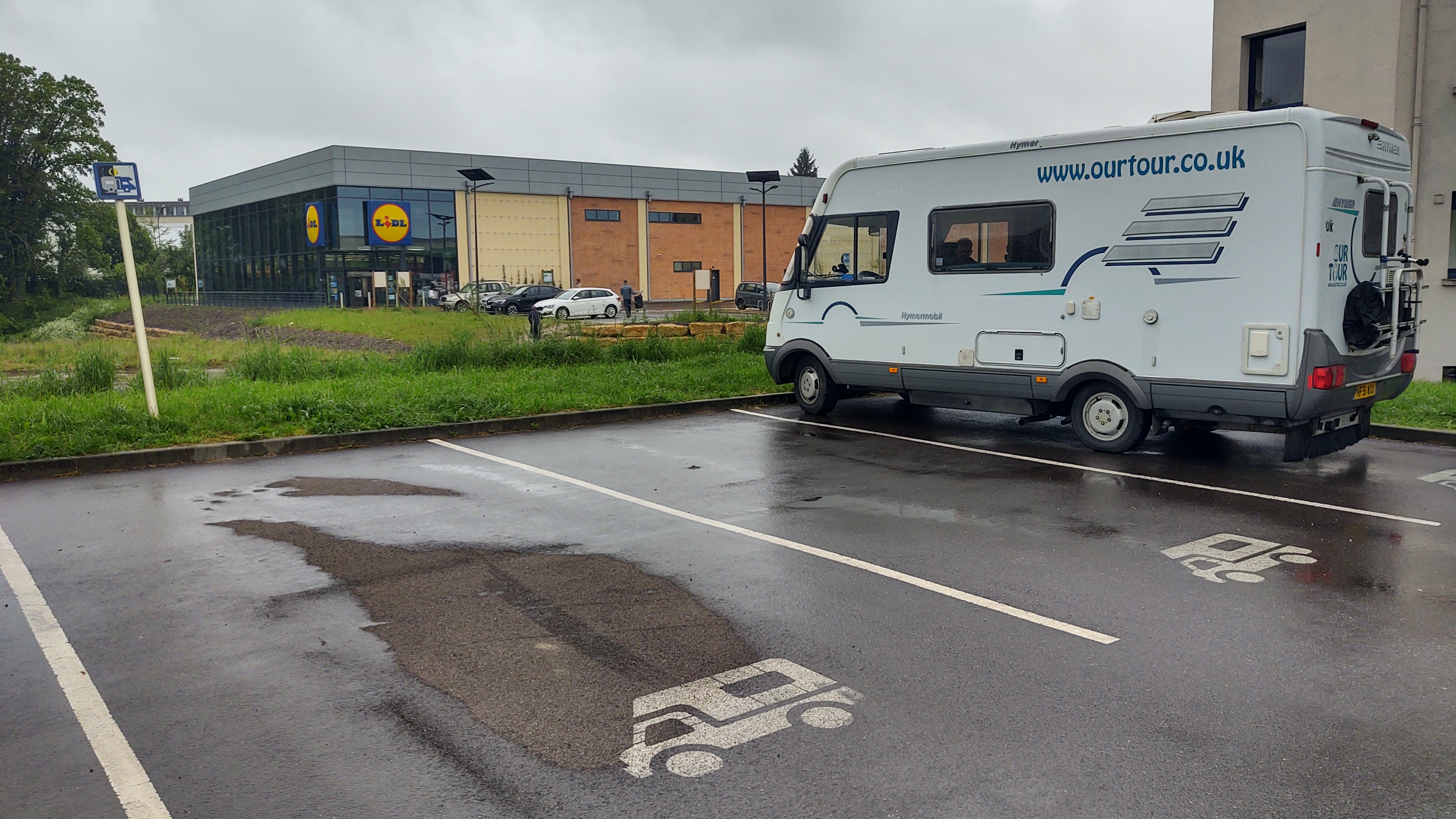
Filling up with diesel, we spotted a self-serve LPG pump, so topped up with that too. We only squeezed in just over six litres, so it cost just over €6, so I was pleased there wasn’t an attendant around to see our pitiful purchase. Next to the E Leclerc petrol station was an automatic laundry. As it was forecast to rain for the next couple of hours, we parked up in the free aire by Lidl and got the laundry done.
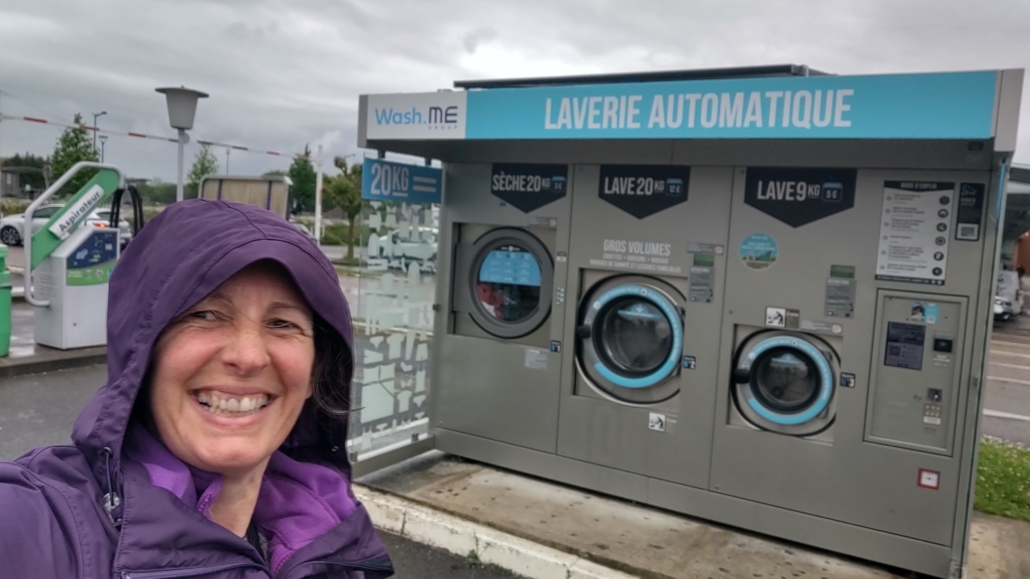
After a spot of lunch from Lidl (well you can’t go wrong with a €0.39 baguette) the rain had finally stopped so we headed off to explore the city. A fellow motorhomer had mentioned in their review of the aire on Park4Night.com that the tourist office had a great walking tour leaflet, so our first stop was the tourist office.
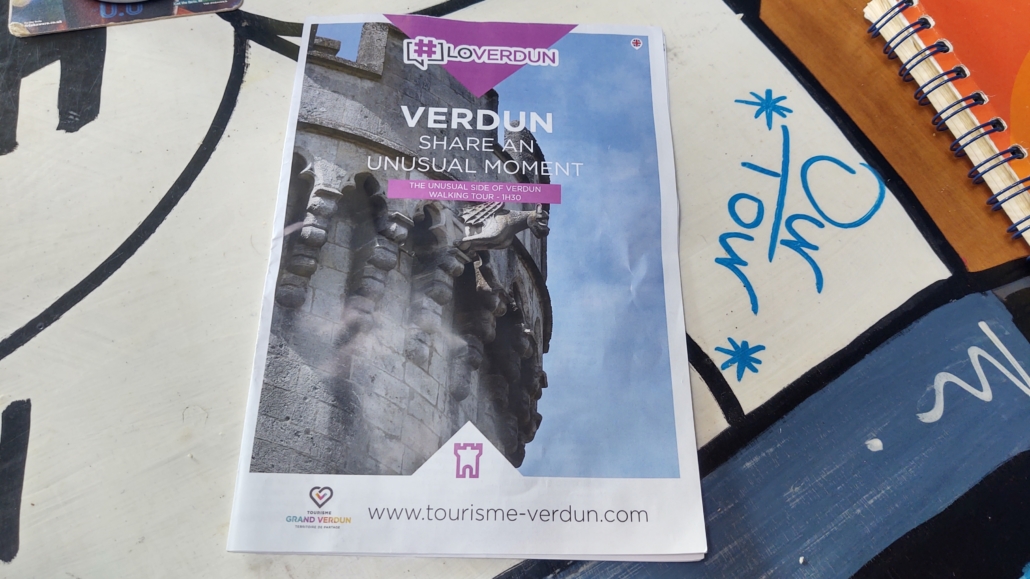
We probably should have stopped at the tourist office before we visited the Verdun battlefields, there were loads of leaflets with information about what to see there. Luckily a bit of internet searching gave us what we needed, but if we’re coming back, I’d certainly nip in there first. Leaflet in hand, I realised we’d already passed a couple of the attractions on our way to the tourist office, so adapted the tour to suit.
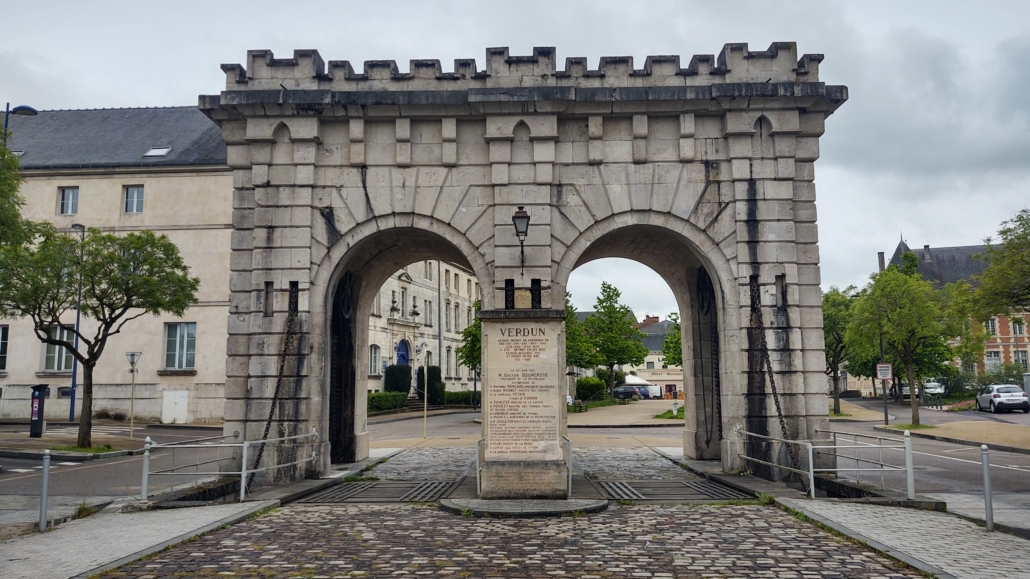
I struggle a bit to understand what I’m seeing when walking around cities like Verdun that were all but destroyed by war. Around 85% of Verdun was flattened during the ten months of the battle of Verdun, and it took ten years to rebuild. So what am I looking at? We walked past a normal looking house with a date from the 1700’s carved into the stone above the door. Is that a reproduction of what it used to look like, or is it the actual building that survived, I guess the question is, does it matter which it is?
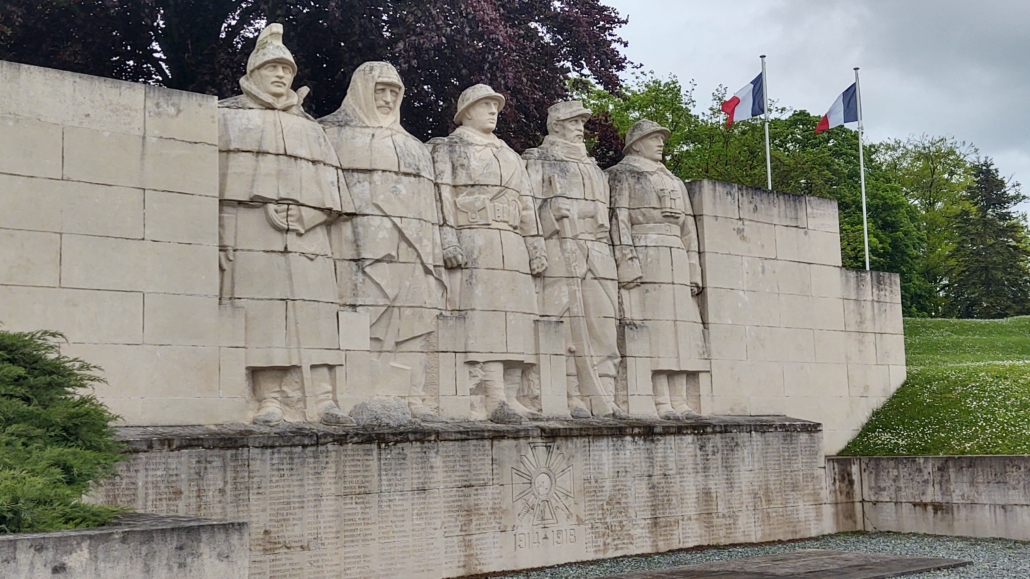
Inside the cathedral information boards explained the damage sustained and how parts of it were rebuilt. The crypt now has scenes from the Battle carved into the capitals at the top of its pillars. To me that seems a very appropriate way to show what the city went through.
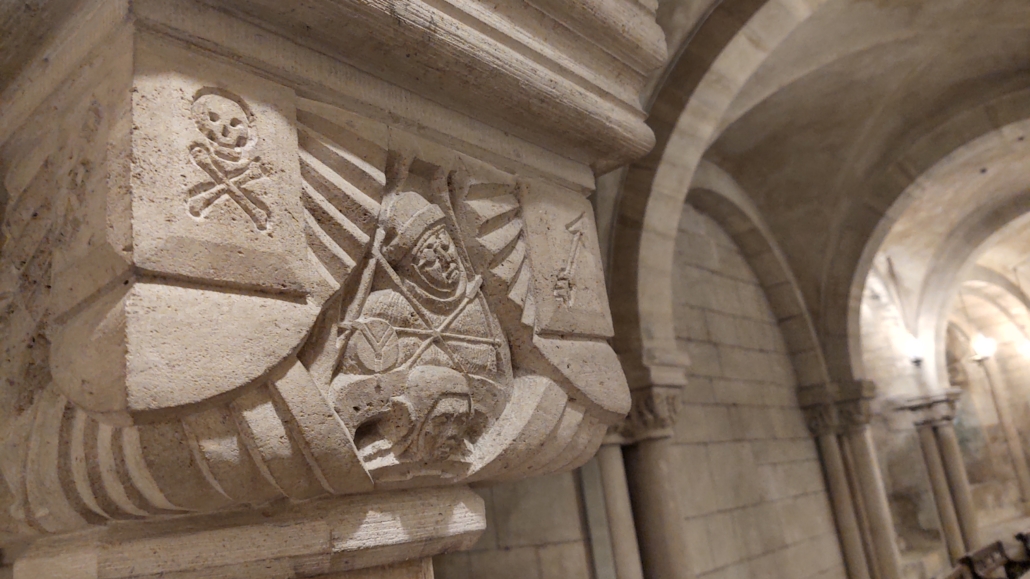
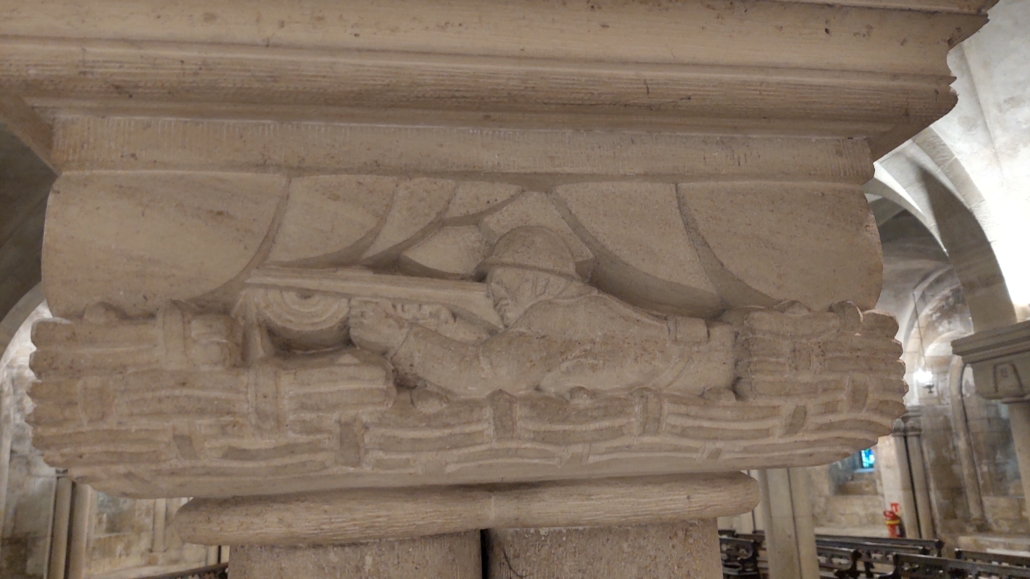
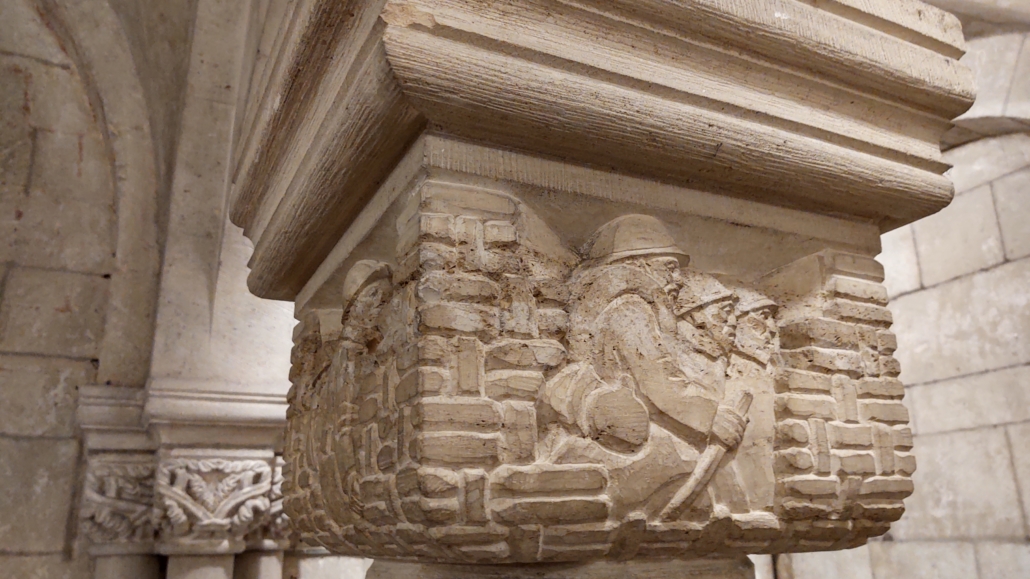

Following France’s defeat in the Franco-Prussian war in 1871, Verdun became a major garrison fortress just a few miles from the new frontier. Inside the citadel, under 16 metres of rock engineers carved out tunnels and galleries for use in the event of a new conflict with Germany. They must have felt it was likely to happen, as the place is enormous and must have cost a small fortune.
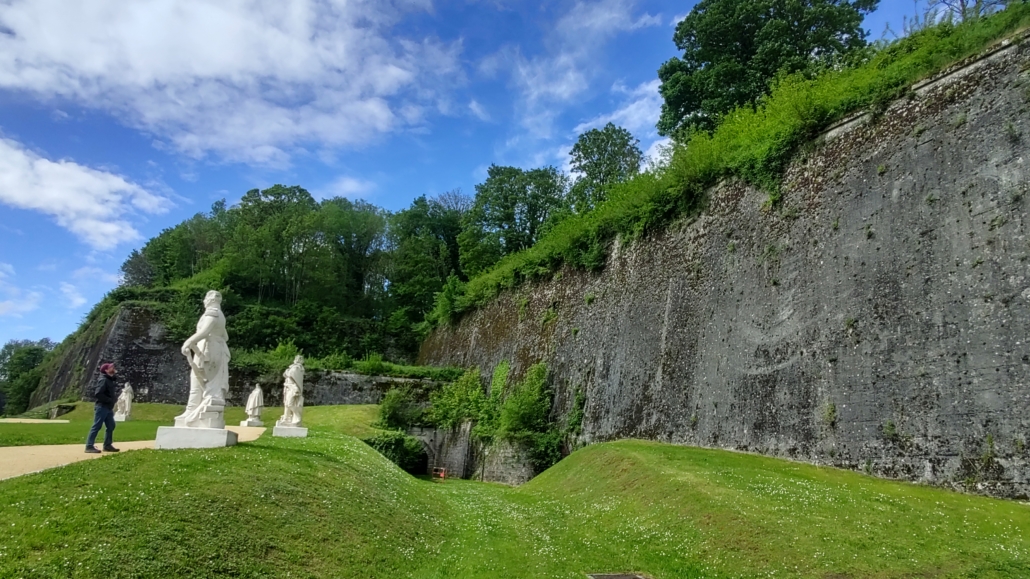
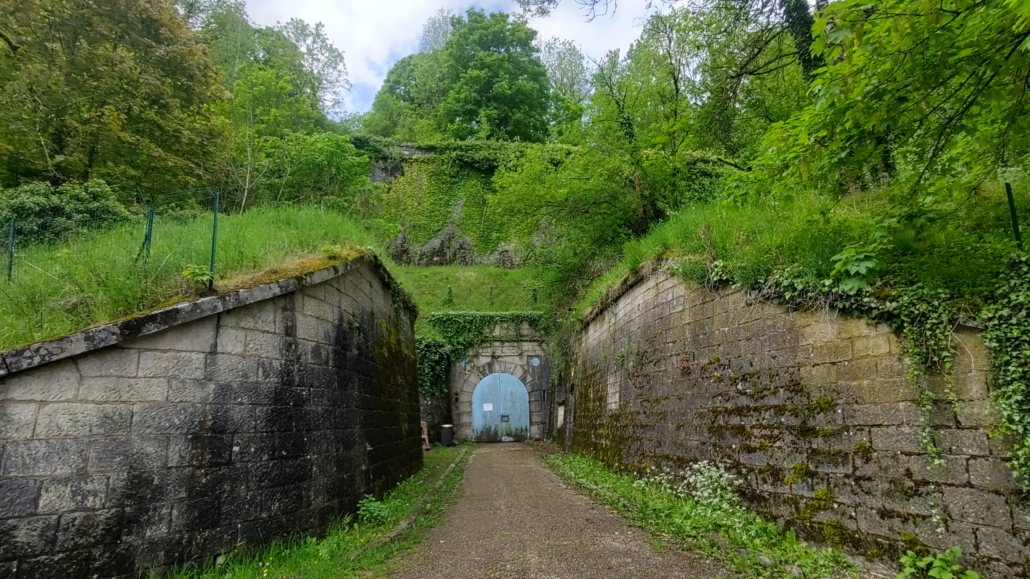

In 1916 Verdun citadel rapidly became the logistical base for the French army involved in the battle of Verdun. Thankfully the city was already evacuated when the bombardment started. Its population shrank from nearly 22,000 in 1911 to around 13,000 a decade later. Today the citadel is a museum, and it seemed every school in the area was visiting. As coachloads of children charged inside, a sign went up to say there were no more tickets available. We both breathed a sign of relief, as we’re a bit fort and war weary at the moment.
Dotted around the city, some buildings still clearly show the scars of war, and I can see why most places have been refurbished to cover them up – they aren’t pretty scars.
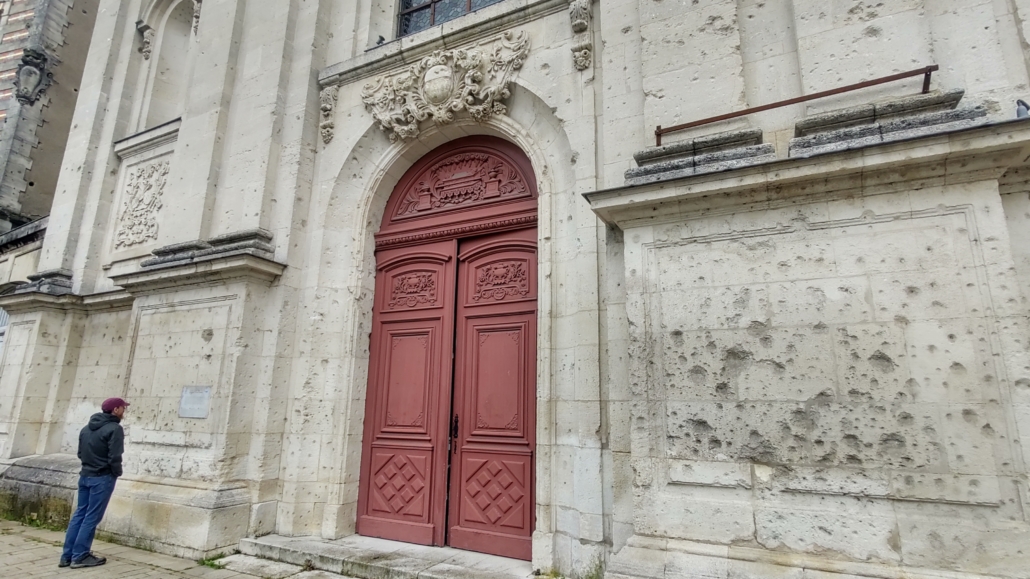
The bombs also destroyed several houses that were built against the walls of the citadel. In the gap where the houses had been, there now stands a large monument to victory. The sheer size and scale of it took me somewhat by surprise when we rounded the corner of a normal street to be faced with it. This, along with several of the other memorials and statues we’re seeing here remind me of the huge statues to communisim that we’ve seen on our travels in places like Grutas Park in Lithuania and Memento Park in Budapest. I guess everyone was trying to make a statement.
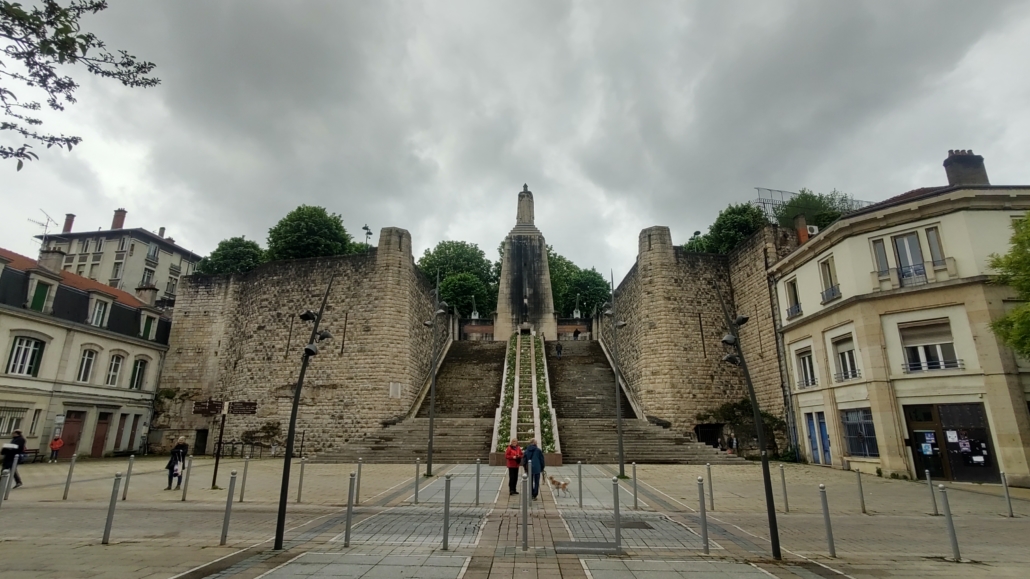
It’s at this point that I feel I need to apologise to Verdun on behalf of the British public. Situated on one of the highest points of the city, right next to the oldest gateway into Verdun, the Chatel Gate, is a huge grey water tower. This was a gift from the city of London during the rebuilding of Verdun. I understand it was no doubt essential, and money was probably tight at the time, but you think we might have been able to come up with something a bit more inkeeping with the surroundings.
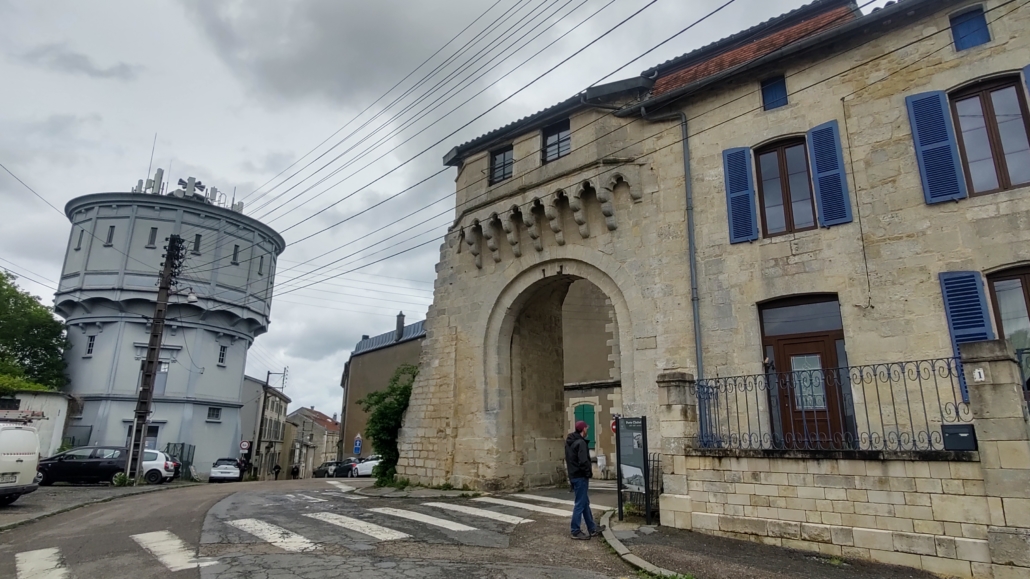
On our way back down towards the river from the Chatel Gate we took the interestingly named (or badly translated) ‘Stairs of the Big Steps’. Here we passed the Virgin Mary housed in a case. Over the years she has marked the border between the upper city which was run by the church, and the lower city which was dedicated to commerce.
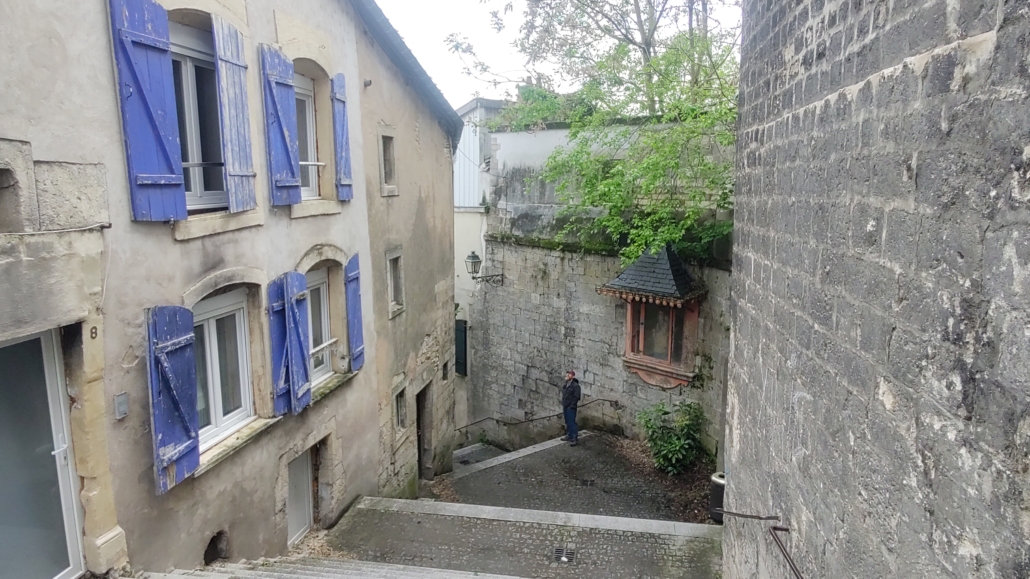
We spent a lovely couple of hours pottering around Verdun, it’s not a huge place. I’ll admit to being pleasantly surprised by the city. I wasn’t really sure what I was expecting, as the only thing I knew about Verdun is its name from being linked to the battle.
I guess I thought everything would be all WWI related, but it isn’t. This place has seen so many wars in its history, and is fortified to the max, yet it’s still a pretty little place to wander around and with the help of the walking guide, I found it to be a really interesting city.
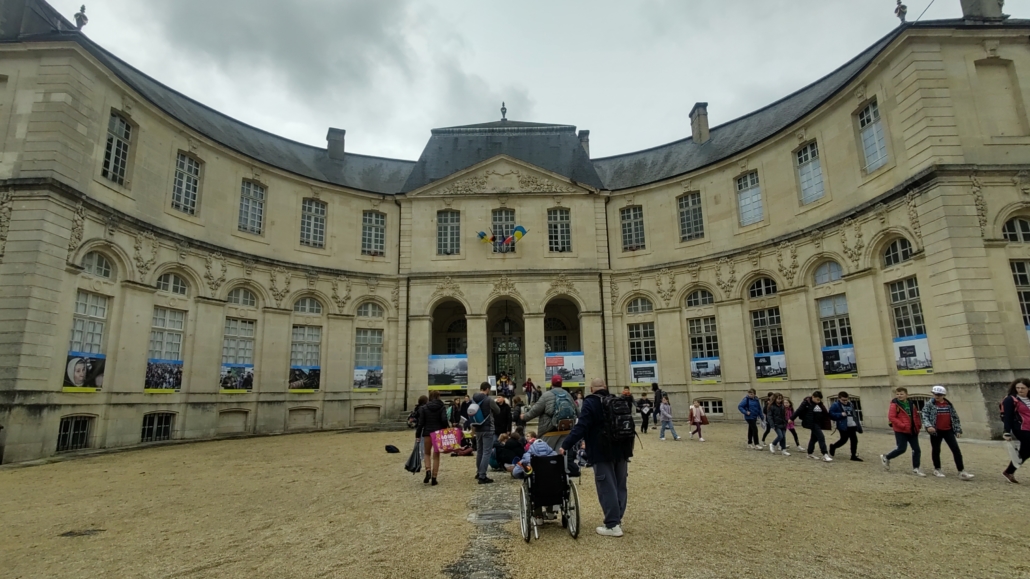
We were both enjoyed wandering around Verdun so much that after dinner we went out for another stroll around. This time we walked along the river to a bridge that was built in the 1800’s and designed to flood the land upstream to stop enemies from getting close to the city. This place really has tried every defensive trick in the book.
After a quiet(ish) night parked up by Lidl with seven other motorhomes, I did a quick morning shop for some French goodies while Jay fixed the water system. The frost protection valve keeps dumping our water even though it’s not that cold, and the usual trick of a peg wasn’t working. By the time I returned from Lidl, a screw is now through a hole in it to hold it up and the water pressure is back to usable again. It’s time to head north and leave France for a while.
Ju x

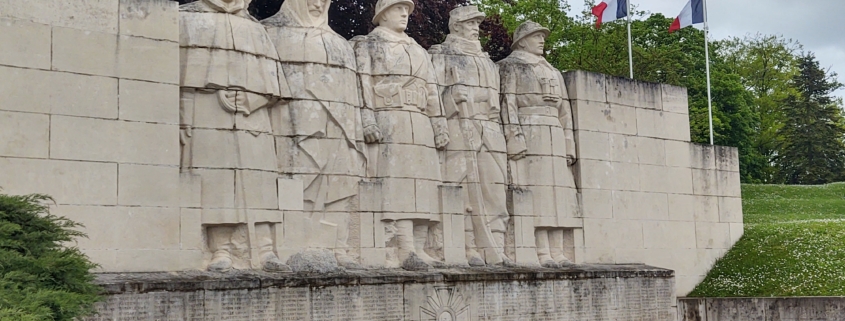

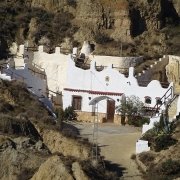
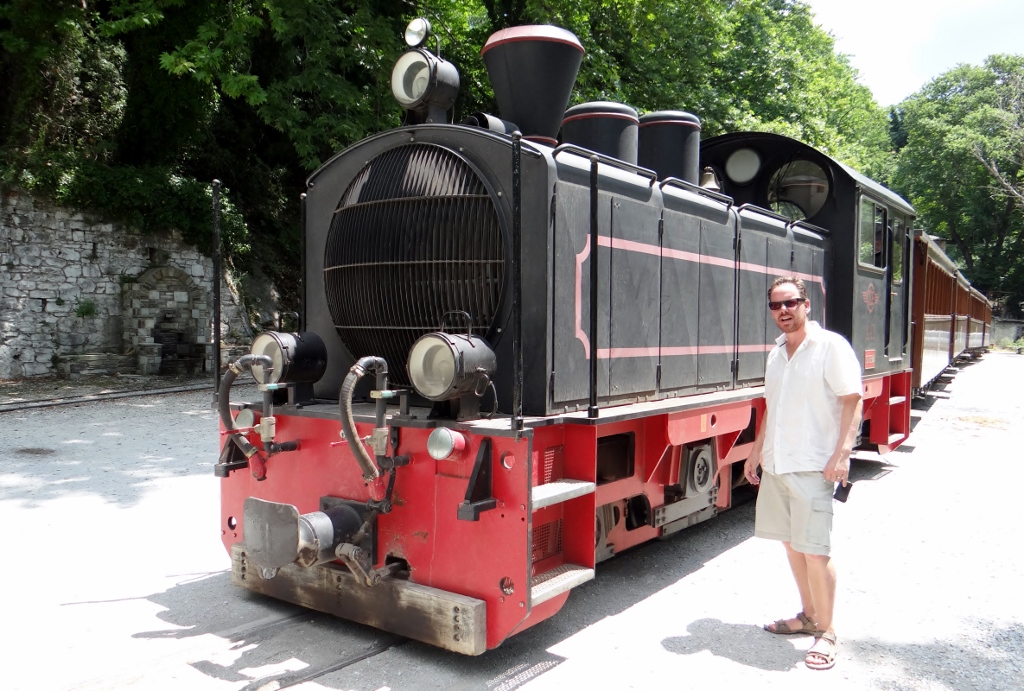
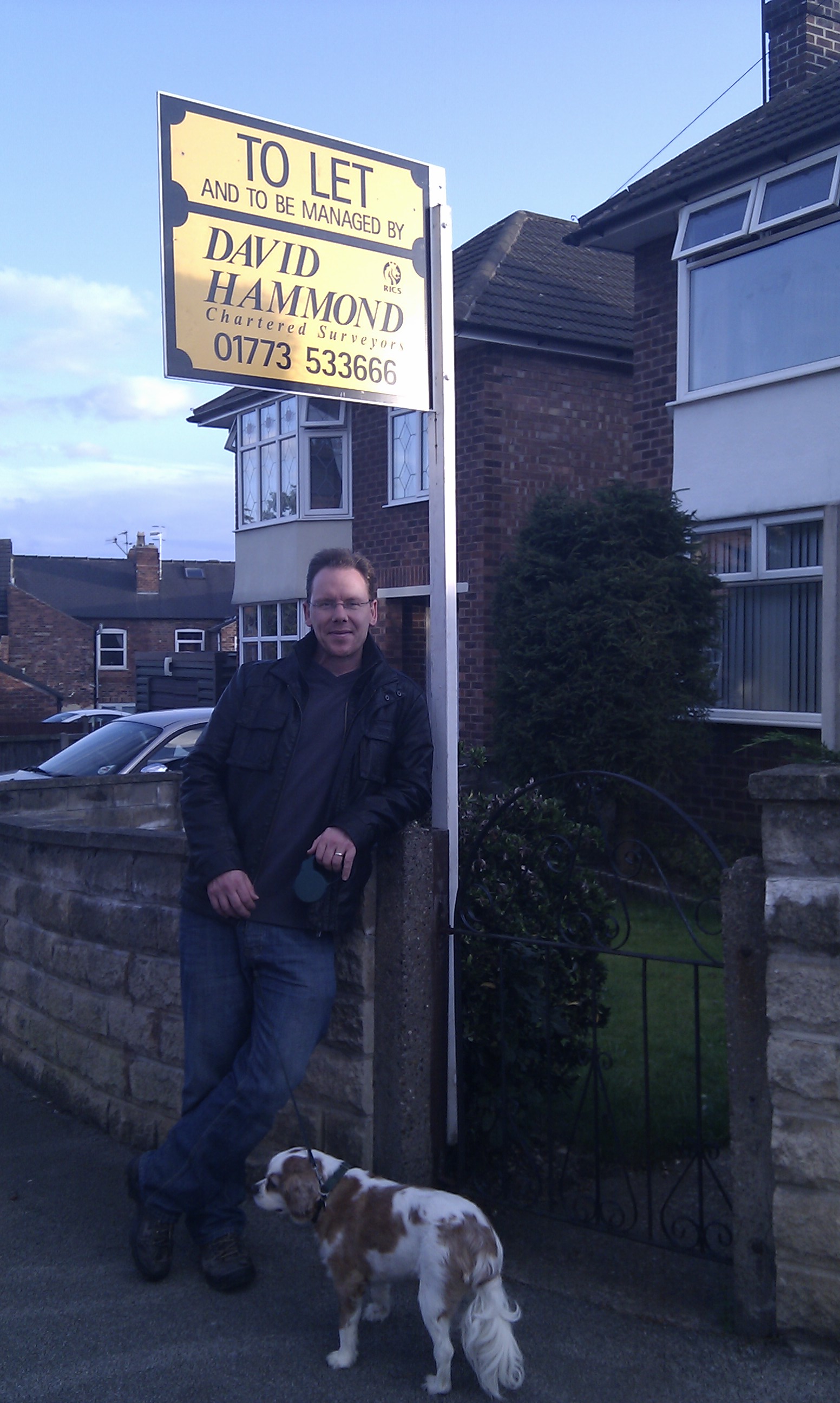
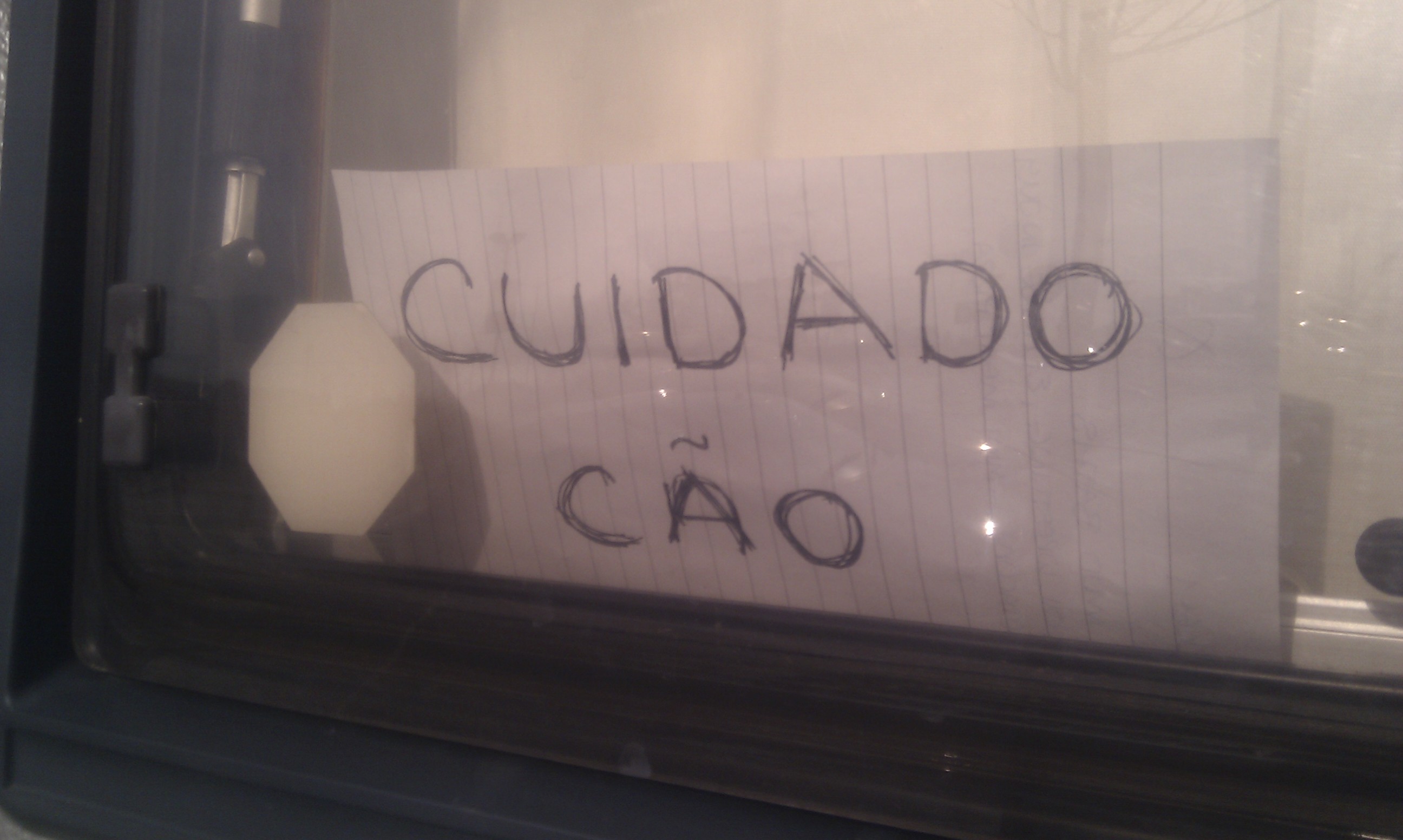
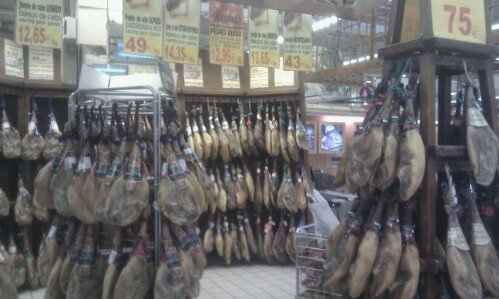
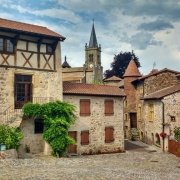


Leave a Reply
Want to join the discussion?Feel free to contribute!